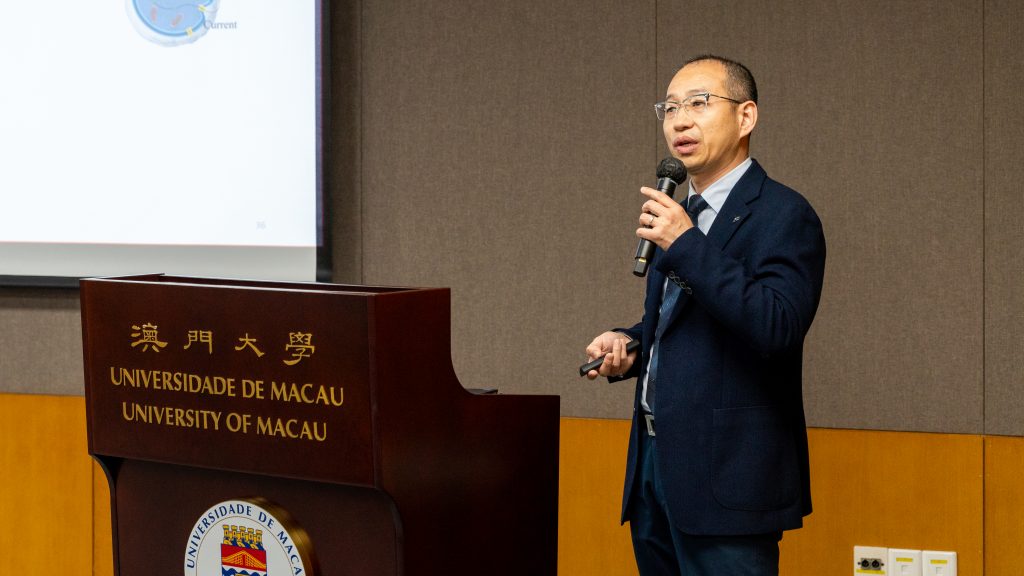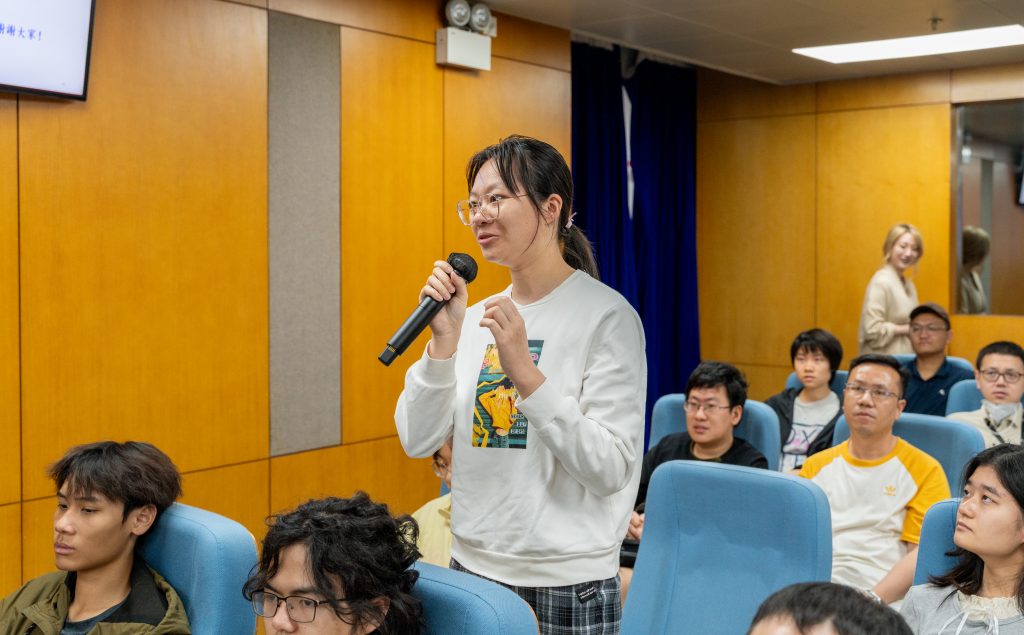The University of Macau (UM) held the 26th UM Scholar Research Forum today (16 April), where Zhang Xuanjun, assistant dean of the Faculty of Health Sciences at UM, gave a talk titled ‘Nanochannel Sensors for Accurate Detection of Toxic Substances and Food Additives’. The talk attracted a full house, with many secondary school students and teachers attending online.
During the talk, Prof Zhang discussed the amplification effect of nanoconfinement on ion current signals. He revealed, for the first time, the critical role of wettability in achieving high-performance formaldehyde sensing from an innovative perspective of hydrophilic-hydrophobic balance. Prof Zhang also introduced several products developed by his team, such as the ‘Janus structure’ nanochannel sensors for accurate detection of toxic substances, molecular probes for bioimaging and sensing, and photosensitisers for effective photodynamic therapy of cancer.
澳門大學今(16)日舉行“澳大學人研究講壇”第26講,由澳大健康科學學院助理院長張宣軍圍繞“準確檢測有毒物質及食品添加劑的納米通道感測器”發表演說,深入探討納米限域對離子電流的放大效應,並首次從親—疏水平衡的革新角度揭示納米通道界面浸潤性對甲醛檢測的關鍵作用,打破“高親水性表面最優”的傳統認知。講座現場反應熱烈,亦有不少中學師生以線上形式參與。
講座中,張宣軍介紹其團隊開發的“兩面神結構”納米通道感測器。該技術可精準檢測甲醛、二氧化硫、重金屬等有毒物質。在此基礎上,團隊成功研製出一系列高效小分子熒光探針與納米檢測器,應用於生物醫學影像技術、有毒物質及食品添加劑的精準檢測。此外,他重點講解了其開發的光敏感型“分子炸彈”,不僅能高效殺死腫瘤細胞,還能通過熒光變色實時匯報治療效果,展現了其研究在診療一體化中的突破性價值。
張宣軍專注於生物醫學領域的化學工具開發,在《美國化學會志》、《自然—通訊》《先進材料》等國際知名期刊發表學術論文180餘篇,研究成果多次獲國際媒體報導。
“澳大學人研究講壇”由澳大研究服務及知識轉移辦公室舉辦,旨在邀請傑出的澳大學人以通俗易懂的方式介紹其前沿研究成果,引導大眾和青年學生了解研究創新的社會意義和價值,以及與日常生活密切關聯的應用性。


